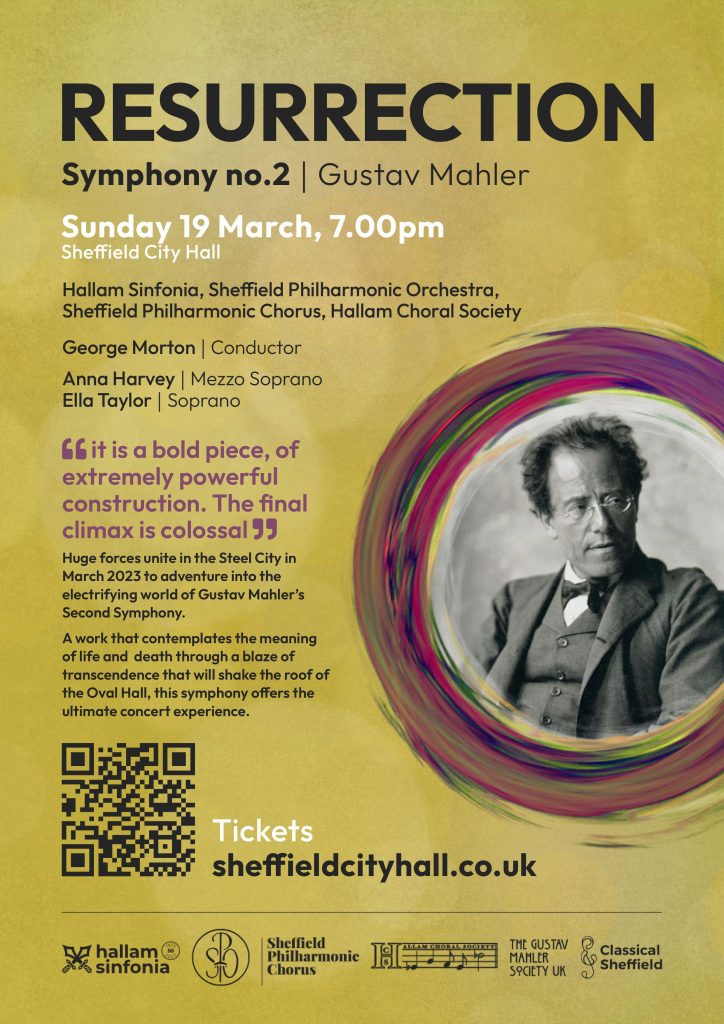Gustav Mahler: Symphony No.2 (Movement IV)
n
Movement IV
n
Although added very late in the compositional process, the fourth movement plays a key role in the dramaturgy of the symphony. After the riotous Scherzo, this movement calmly opens, not with the orchestra, but with a human voice. The movement is composed for solo alto voice and orchestra and acts as a bridge between the Scherzo and Finale movements.
n
Similarly to the Scherzo, the fourth movement also uses Des Knaben Wunderhorn for literary inspiration. The short poem, entitled Urlicht (‘Primeval Light’), answers questions raised in previous movements. Mahler commented on what the poem represents: “the questioning and agonised searching of the soul for God and its own eternal existence.” The original text and translations can be found below:
n
n
| n
German n |
English |
| O Röschen rot,n
Der Mensch liegt in gröβter Not, n Der Mensch liegt in gröβter Pein, n Je lieber möcht‘ ich im Himmel sein. n
n Da kam ich auf einen breiten Weg, n Da kam ein Engelein und wollt mich abweisen, n Ach nein, ich lieβ mich nicht abweisen. n
n Ich bin von Gott, ich will wieder zu Gott, n Der liebe Gott wird mir ein Lichtchen geben, n Wird leuchten mir bis in das ewig selig Leben. |
O red rose,n
Man lies in deepest need, n Man lies in deepest pain, n Yes, I would rather be in heaven. n
n I came upon a broad pathway, n An angel came and wanted to send me away, n Ah no, I would not be sent away. n
n I am from God and will return to God, n The dear God will give me a light, n Will light me to eternal blessed life. |
n
n
The opening invocation of ‘O red rose’ comprises the alto soloist and dampened cello and basses marked at ppp. Following the opening, a beautiful chorale is played between a select amount of woodwind and brass. These players are sat at the rear of the orchestra so that their sound is ‘far away’ for the listener. The chorale serves as a prelude to the next three lines of text, which ends with the line ‘Yes, I would rather be in heaven’, and Mahler illustrates this unfulfilled aspiration in the vocal line by leaving the phrase cadentially unresolved. This quiet chorale section ends the first half of this movement.
n
The second half establishes itself in a new key, with the clarinet leading with a rolling triplet figure over the long notes on the harps. Once again Mahler stresses the fourth interval, which locks in all of the movements musically thus far. The second part of this short movement sees a number of solo voices come forward, such as the clarinet, and violin. They interweave with the alto, who keeps pushing the tempo along. The main distinguishing factor between the two halves is the tempo shift, so listen out for it!
n
The final stanza returns back to the opening key of Db major, as well as the vocalist ‘returning to God’, which is symbolic and points towards themes surrounding the Last Judgement. With the last stanza exclaiming the light that God will give to the ‘blessed life’ of the voice, the movement ends delicately and with much maturity.
n
Even though Urlicht was added at the end of the compositional process of the Second Symphony, the dramaturgy it offers to the overriding themes of the work are paramount to the development of the programme. Mahler wrote about the voice of ‘naïve faith’ which is represented by the alto soloist. After the fury of the Scherzo, Urlicht offers a very different perspective on the story, which sets up the programme for the Finale. All three of the intermezzi movements end quietly, which makes the opening of the final movement quite literally earth-shattering.
n
n
Ⓒ Alex Burns 2023
n
n
I gratefully acknowledge the financial support provided by the Gustav Mahler Society UK for this Mahler 2 blog series.
n
To learn more about the fascinating life and music of Gustav Mahler and to enjoy study days, social events and recitals which are held throughout the year, enquire about membership at: info@mahlersociety.org or visit the Gustav Mahler Society UK website.
n

n
n
You can experience this epic symphony for yourself this March in Sheffield when over 300 local musicians unite to perform this incredible work.
n
n

n
The post Gustav Mahler ‘Symphony No.2’: Movement IV appeared first on Classicalexburns.
n
